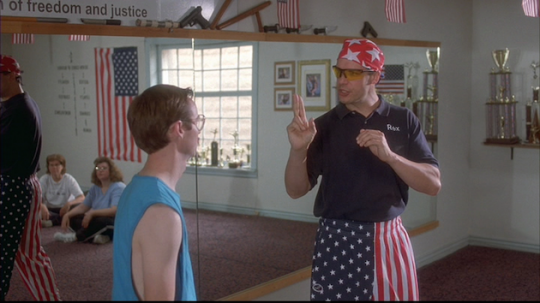You may recall some months back that the Ninth Circuit Court of Appeals ruled that agents of the government had the right to discriminate against students wearing American flag-themed apparel on the fifth of May because that particular sartorial choice angered another group of students. The second group of students threatened the first group of students with violence for their peaceable expression, causing the administration to censor the first group of students (who, I shall remind you, were guilty of aggressively wearing the American flag on American soil).
Over at National Review, David French notes that the Ninth Circuit has refused to overturn this absurd ruling en banc. While some will be tempted to incorrectly argue that students have no First Amendment rights, French notes why this is foolishness:
Even in the academic setting, the traditional prohibitions against heckler’s vetoes prevail, for the same, obvious reasons. While the Supreme Court has held that free speech is broadly protected in public schools unless the speech causes a "substantial disruption" to the academic environment, the "substantial disruption" refers to the nature of the speech itself, not to the listeners’ reaction. ... But the case went beyond a heckler’s veto (as bad as that is) and veered into outright viewpoint discrimination. By banning the American flag displays while permitting other flag displays, the Court didn’t just censor one view, it privileged others.
I find it exceptionally hard to believe that the Supreme Court won't overturn this ruling. I mean, the Supremes ruled that students are allowed to promulgate messages promoting drug use in 2007. If that's kosher, I can't possibly imagine a situation in which they're going to rule that it is unacceptable to wear clothing sporting the American flag.
Though it does raise an interesting question or two. One can't help but wonder how much culpability, in the 9th Circuit's eyes, the wearer of an item of clothing has for crimes committed against the wearer. The 9th Circuit's logic here is, basically, if you're wearing certain clothing you're asking for it ("it" being "trouble"), therefore the state is totally allowed to bar you from wearing that clothing. What is the level of scrutiny the 9th Circuit is applying? If I wear a USMNT jersey whilst waltzing through Columbia Heights during the World Cup, should the police be able to force me to wear something else in order to avoid the risk of violence being visited upon me by the denizens of that fair 'hood? Should the cops be running around with tape measures to ensure skirts are not of a length that suggests the wearer is "asking for it"? These are the burning questions that the 9th Circuit's ruling has opened up! Get on that, guys. Your nation needs you.
